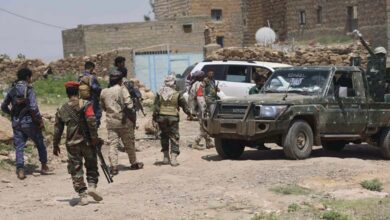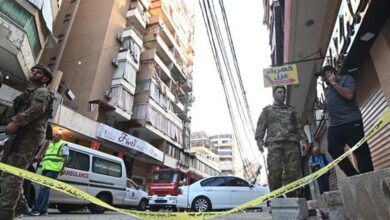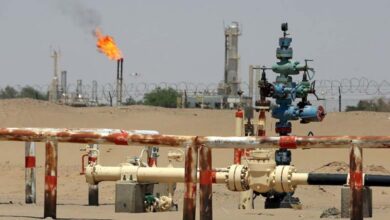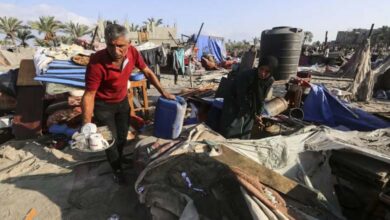Two Years of War in Gaza: How Destruction Spread Like Wildfire
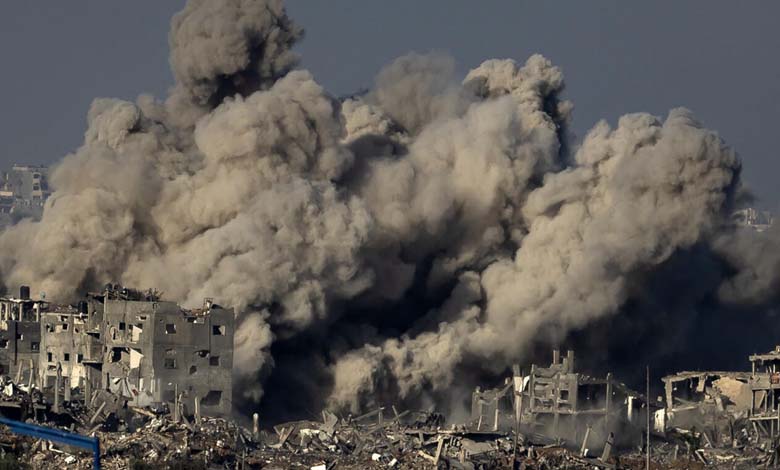
On October 7, Gaza marks another chapter in a tragedy that is no longer breaking news but a grim daily reality reflected in devastating numbers and haunting images.
Satellite maps taken over time reveal the relentless progression of destruction that has engulfed every street and home, telling the story of two years that turned the Gaza Strip into human and physical ruins, according to data from international agencies and UN sources.
-
Heavy Bombardment: Israeli Fire Defies Trump in Gaza
-
Gaza Residents Back Trump’s Plan and Shout at Hamas: Enough
How Did the Destruction Spread?
Israel’s campaign initially focused on northern Gaza, claiming Hamas fighters were hiding there.
Beit Hanoun, a town just two kilometers from the border, was among the first areas to be hit by Israeli airstrikes, suffering extensive damage.
A BBC map dated October 12, 2023, shows Gaza’s cities from south to north: Rafah, Khan Younis, Deir al-Balah, and Gaza City. Areas marked in red represent destruction, heavily concentrated around Gaza City and Beit Hanoun.
-
Gaza on the fire of waiting… Is a “crescent” of truce appearing on the horizon?
-
Trump’s Deadline for Hamas Nears Its End… Gaza’s Displaced Caught Between Hardship and the Inability to Escape
Israel continued bombing Gaza City and northern urban centers, urging civilians to move south of Wadi Gaza “for safety and protection” before launching its ground invasion at the end of October 2023.
However, southern Gaza — the supposed safe zone — was also bombarded, turning large parts of both the north and south into rubble by late November.
By January 2024, over half of Gaza’s buildings had been damaged or destroyed, with the red zones on satellite images spreading across nearly the entire territory, particularly around Khan Younis.
After two years of conflict, roughly 70% of Gaza’s structures have been damaged, according to the UN. About 90% of residential units were affected: 160,000 destroyed and 276,000 severely or partially damaged.
-
Gaza Developments: Israel Shuts Down the Last Passage from South to North
-
Displaced in a cemetery: Gaza’s living seek refuge among the dead
The “Tent City”
Even before the war, Gaza suffered under a strict Israeli blockade. Two-thirds of the population lived in poverty, and thousands resided in UN-run refugee camps.
Today, much of Gaza’s narrow strip — 41 km long and 10 km wide — is uninhabitable. Entire neighborhoods have been flattened, and farmlands once covered with greenhouses are now wastelands of sand and debris following Israeli bulldozing operations.
Families displaced multiple times now cluster in so-called “humanitarian zones,” such as Al-Mawasi along Gaza’s Mediterranean coast near Khan Younis.
-
With the death of an officer in Gaza, Israeli losses approach the one-thousand mark
-
Day of Triple Recognition: Palestine Born from Gaza’s Suffering
In May, Israel expanded this zone to include parts of Khan Younis and Deir al-Balah after its ground assault on Rafah, which had housed over one million people.
By August, the UN estimated that 1.2 million people were sheltering in Al-Mawasi — an area lacking infrastructure or basic services — whose size expanded from 7 to 72 square kilometers.
Overcrowding has become a severe concern in UN emergency camps in central and southern Gaza, many operating far beyond capacity. Thousands of families live in tents, makeshift shelters, or open areas.
-
Conflicting reports on an Israeli ground incursion in Gaza as nearly half the city’s residents flee
-
From Death to Death: Stories of Escape from the Hell of Gaza
A Growing Hunger Crisis
Around 1.8 million people face severe food insecurity, including 133,000 in catastrophic conditions, according to the Integrated Food Security Phase Classification (IPC). Acute malnutrition rates are ten times higher than before the war.
The World Food Programme said that at least 300 aid trucks per day are needed to meet basic needs — a figure not reached since the conflict began.
UN officials blame Israeli military restrictions, continued hostilities, and lawlessness for worsening the crisis. Israel counters that it imposes no limit on aid deliveries, accusing the UN of logistical failures and Hamas of diverting supplies — allegations denied by the group.
-
Latest News from Gaza: Towers Collapse as Ground Operation Imminent
-
Palestinian political analyst: despite their importance, aid convoys are not enough to meet Gaza’s needs
Poverty and Economic Collapse
The World Bank reported that Gaza’s economy shrank by 86% in the first quarter of 2024 — the sharpest economic contraction ever recorded.
Nearly 100% of Gaza’s population now lives in poverty, compared to 64% before the war, and the cost of basic goods has risen by 250%.
UNCTAD estimates war damages at $18.5 billion — seven times Gaza’s 2022 GDP — warning that, at the current pace, it could take 350 years to restore the economy to prewar levels.
Most hospitals are inoperative due to damage or lack of supplies. Of Gaza’s 36 hospitals, only 18 remain partially functional. Al-Shifa Hospital, once the largest medical facility, lies in ruins, though its emergency department has reopened.
-
Gaza War: Britain Punishes Israel in an Unexpected Way
-
Israel expands its operations in Gaza: deaths, evacuation orders, and relentless bombardment
Recovery Remains Distant
Beyond human losses, the UN Environment Programme (UNEP) warns that repairing Gaza’s damage will take decades. Water and sanitation systems are “almost completely non-functional,” waste is piling up around camps, and soil and water sources risk contamination from munitions and destroyed solar panels.
The UNEP estimates more than 50 million tons of debris across Gaza — and that clearing it all could take up to 21 years.


